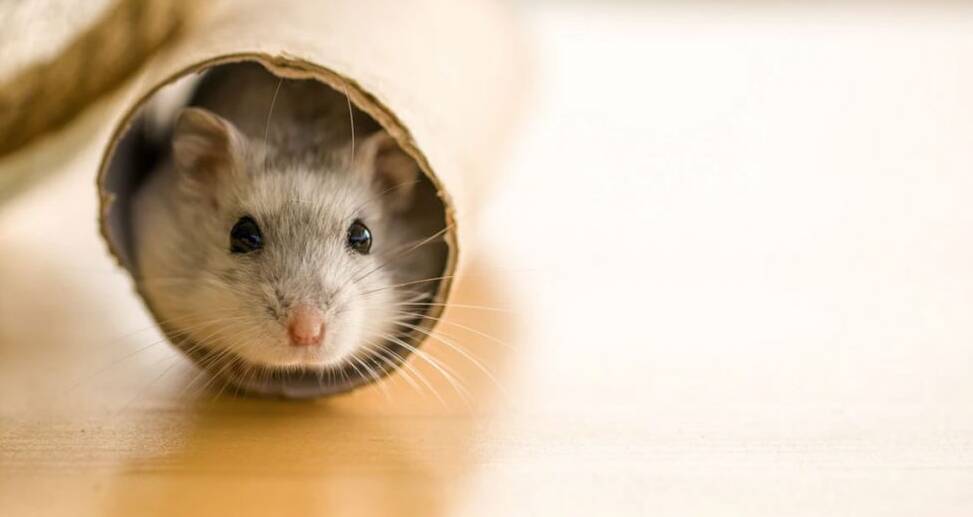Given that the average lifespan of a hamster is only 2-2.5 years, hamster owners are familiar with the pain of saying goodbye to their dearly beloved pet. As a matter of fact, if you own a Siberian dwarf hamster, your pet will depart the world within 12 months.
But don’t automatically assume what you see are telltale signs of a hamster dying just because it has started to act strangely.
Being able to know the difference between an ill hamster and a hamster with one foot already in the grave is a little tricky.

Common Causes of Death
The two primary causes of death in hamsters are unexpected illness caused by any health issue or just usual issues being old. Genetics, stress, and diet can do their part too.
Let’s take a look at some of the possible reasons why hamsters pass away, in detail.
The first thing to be aware of is a hamster’s physical state at the time of purchasing it. It is entirely possible that your hamster already had a genetic defect or other health problem that wasn’t disclosed by your breeder, knowingly or unknowingly.
For your own sake, take some time to do proper research about pets before buying them; even if you have to travel far to meet the breeder or inspect the holding area. Avoid buying hamsters from pet stores near you.
Diet can play an important role in hastening your pet to an early grave. Contamination of its food source, spoilage of food, and lack of essential nutrients are all concerns in terms of daily food consumption activities.
The food bowl should always be removed at the end of the day and refilled with a supply of fresh food. Uneaten portions need to be removed, even if they’re just dry grains. If not, they can contaminate the remaining food in the bowl and create a breeding ground for bacteria.
Hamsters need a balanced diet in order to survive. Their primary meal should consist of grains and seeds, with fruits and vegetables added around 4 times per week. Additional sources of protein will do a hamster well, so feel free to include mealworms or small insects as an occasional snack.
Don’t reuse old food; always make sure that it’s fresh or the hammy could fall victim to gastrointestinal diseases.
Some substances such as cedar and pinewood have been found to be harmful to rodents. Make sure that your hamster’s food bowl, water bottle, and cages are thoroughly cleaned and rinsed with bleach at least once a week.
Don’t use harsh chemicals when cleaning – a good mixture of diluted bleach and white vinegar should suffice.
An additional environmental concern that can lead to a hamster’s demise is if its cage is situated in the wrong place. Make sure that it’s not too close to sources of heat or cold, or downwind from any toxic fumes coming from a boiler, stove, or oven. Hamsters are very sensitive to smell and temperature due to having a heightened olfactory function.
And finally, the most common cause of them all: old age. How do old hamsters die?
Time will undoubtedly eventually be the ultimate factor in the loss of our favorite pets. However, there are telltale signs of a hamster dying of old age, so at least you’ll know what to watch out for and when to really start appreciating every moment you spend with your pet.

Symptoms of Death
Knowing how to spot the symptoms indicating that a hamster is near-death is an important skill for an owner. Mostly, as you gain more experience with hamsters, you’ll begin to notice the patterns in their life cycle.
If you observe your hamster carefully every day, you’ll begin to notice the small changes in its personality and behavior as it grows. Young hamsters will exhibit hyperactive behavior, running on the exercise wheel like there’s no tomorrow, bang on the cage, and destroy their furniture.
Once they reach adulthood, that crazy energy will have burned off and they’ll have developed a calmer and rounded-out personality.
Once they reach the seniority at around 2 years of age, which is about 60 years by human standards, they will have slowed down considerably. They will no longer be grooming themselves as carefully and will lose weight.
They may develop cataracts on their eyes. They’ll hardly touch the food bowl, perhaps coming out of hiding only a few times a day to grab food.
Other respiratory problems that can indicate old age are labored breathing, wheezing and huffing, and noisy or heavy breathing. Gastrointestinal anomalies may present themselves in the form of diarrhea and loss of appetite.
You may take your ham to a vet to have it checked but consider if it’s worth the trip. Your pet will be uncomfortable, scared even, in a new environment with new people, and it might be better to simply just care for it at home until it passes away from its old age.
Your ham can contract illnesses that, if not treated immediately, can result in death. Some of the symptoms to look out for are blood discharges from the ears, mouth, eyes, nose, or anus. Cysts and tumors are common in rodents and they may be cancerous and active.
The safest way to avoid death by sickness is to visit a veterinarian as soon as you notice odd behavior or if the hamster has deviated from its usual daily activities.